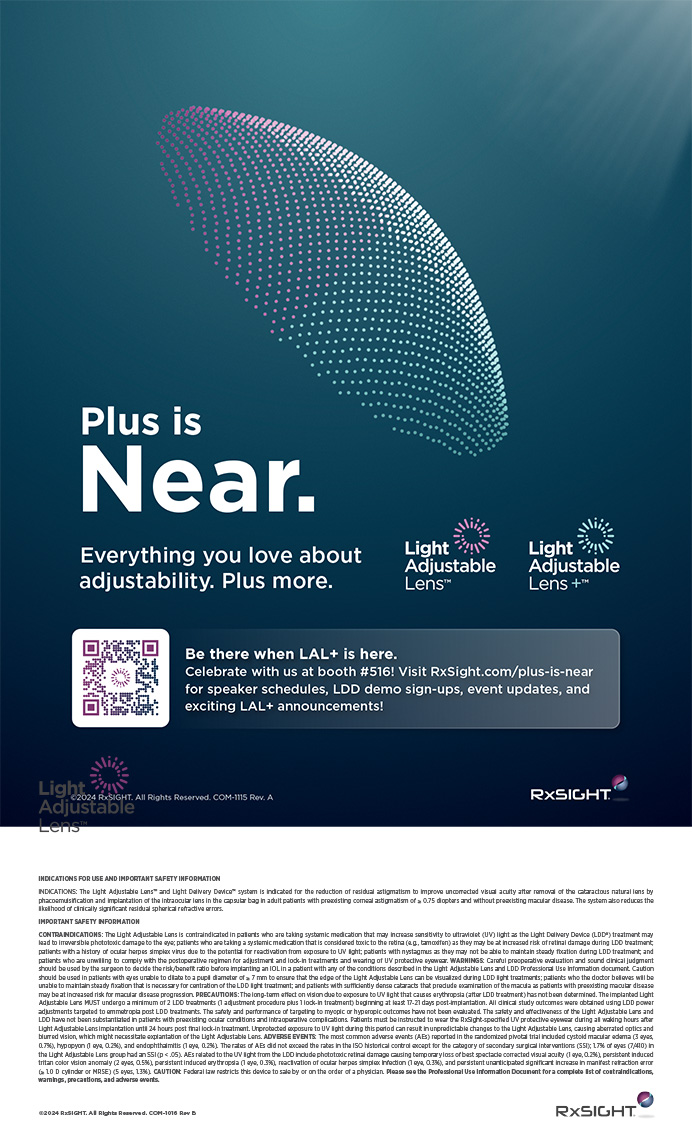
At the end of 2019, my dance card for 2020 was full. I was eagerly planning presentations for a busy 2020 ophthalmology meeting schedule. Little did I know that this year was not going to go exactly as planned. Ophthalmology meetings around the globe have been canceled, postponed, or retooled as virtual events. Like the rest of the world’s population, we ophthalmologists have been expected to adapt to a new normal, which for many of us requires learning how to effectively teach and engage with colleagues online.
Although most of the skills that we typically use for in-person presentations transfer well to webinars, several unique aspects of virtual talks warrant careful consideration. For instance, online presentations lack a standard podium, and no audiovisual team is present in the room. Moreover, there may be few or no visible cues that the audience is actively focused on the material being presented. Although I have delivered numerous online webinars in the past, the transition of practically every ophthalmology meeting to a virtual format became an opportunity to customize my presentations and hone my skills to ensure success at these events.
With these thoughts in mind, here are my top 12 tips for elevating the quality of your online presentations.
1. WARM UP
In concert, professional musicians do not take their places on the rostrum and immediately commence performing. They tune up first. Follow their example. Your voice is an instrument. Warm up, whether by performing some vocal training exercises or, if you are going to be giving a presentation, by rehearsing it out loud.
2. BE A SAVVY SET DESIGNER
When deciding where to sit, look behind you. Whatever will be in the background of the shot should not be distracting, messy, or potentially offensive. I recommend starting with a screen test. Something that you did not notice initially may be an eyesore on a full-screen view. Early on when I was filming presentations in my condo, I realized that the bookshelf behind me was cluttered, so I removed a lot of the contents.
3. DRESS FOR SUCCESS
Avoid busy patterns. Wear solid colors that contrast with your background. This is not the time to see how well your shirt can serve as camouflage against the wall behind you.
4. OPTIMIZE YOUR LIGHTING
The lighting where you will be filming should allow viewers to see your face clearly and eliminate harsh shadows. Test out locations and ensure that the light is facing you. Webcams automatically adjust to the brightest source of light, so you may need to adjust the distance of your light source. (Pro tip: In a pinch, if you need an external light source, set your laptop or tablet to a white screen and place it in front of you.) Bear in mind that natural light shifts throughout the day, so the ideal spots for filming in the morning and evening may differ.
5. SET UP THE SHOT
Ideally, you should be located approximately 3 feet away from the camera on your computer because it is at a fixed point and typically uses a wide-angle lens. Sitting too close to a wide-angle lens can produce optical distortion of your face, in which some features appear to be overly large. Generally, the most flattering lens angle is achieved by positioning the camera at or slightly above your seated height so that you are visible from the chest up. This setup may require placing a few books or magazines beneath the computer.
6. KNOW YOUR BANDWIDTH
Video footage can be an excellent addition to a presentation—but not if it does not play well. Determine in advance if your internet bandwidth and the online platform you will be using can support the video(s) you wish to show.
Also test your sound capabilities. Your internet bandwidth may be able to support your video or your audio needs individually but not together. If that is the case, consider separating your audio feed by calling in and placing your phone on speaker directly in front of you. I should also note that many computer microphones are not sufficiently high-tech or in tune for a webinar. If you are going to be speaking at many online events, you may want to consider investing in a USB microphone.
7. PAY ATTENTION TO BODY LANGUAGE
Be cognizant of how you are seated. It is normal to sit back in a chair, but doing so can make you appear to be slouching. Sit instead on the forward half of the chair. Keep your back and neck straight and relax your shoulders. Try not to touch your face while on camera because viewers can find it distracting.
8. ACT NATURALLY
Speak as you would if you were physically with your audience. Maintain a reasonable pace. Smile when appropriate and show enthusiasm for your topic. These areas seem to become most problematic with prerecorded sessions in which presenters rely heavily on notes; some speakers lose their usual vocal inflections and speak at an abnormal pace. I recently reviewed a video for a colleague in which the material was incredible, but, instead of delivering a dynamic presentation, the presenter sounded like he was reading from a book.
Be who you are in real life. It is okay to gesture while speaking if, like me, you talk with your hands; just be careful to avoid broad or wild movements. Use humor when appropriate. You can and should laugh at your own jokes (I do). The best online presentations I have seen are those in which it felt like the speaker was truly present.
9. LOOK AT THE CAMERA
Looking at the camera when you are speaking can feel particularly odd if the person or people to whom you are speaking are visible onscreen, but those people will experience the illusion of eye contact only if you look directly at the camera rather than at them. This strategy can increase their level of interest in both you and your material.
10. ENCOURAGE ENGAGEMENT
Audience engagement is the best measure of the success of any presentation. Most of the platforms being used for online meetings and presentations offer a variety of interactive tools such as audience polling, chat boards, and direct audience questions. At the beginning of a presentation or session, lay out the expectations for the audience on how you plan to engage them. For example, prepare them to participate in a poll, alert them that you will be directing questions to viewers or fellow panelists, or invite them to raise their hands.
Also keep in mind that those watching your presentation online may not be able to see what is going on in front of you. If you are going to pause to call up a visual aid, to resolve a technical difficulty, or to allow someone to pose or answer a question, verbalize what is occurring. (As an aside, showing a little humor about a technical problem can go a long way with your audience.)
11. BE SELECTIVE
Online viewers are often watching you and your visual aids simultaneously. At times, they may not be able to absorb both the words that you are saying and slides that are full of text, tiny graphs, and tables crammed with data. Minimize the number of words on your slides in favor of showing more photographs and videos. This will allow the audience to focus on what you are saying instead of trying to decipher what is on a slide.
12. REVIEW YOUR PERFORMANCE
If you watched the television series, “The Last Dance,” you saw that Michael Jordan and the Chicago Bulls spent hours reviewing game footage to identify areas for improvement and to figure out what it would take for them to win that final championship. Consider reviewing your own performances. As tedious as it was, watching some of my early webinars gave me insight into where I needed to focus to improve my online delivery.
Moreover, if I am going to be presenting something new or trying a new technology, I take some extra time to record a demo in order to analyze the content and familiarize myself with the technology before the event.
Logging on at least 15 minutes early to ensure that the sound and video are working properly can allow you to relax and feel confident during your presentation.




